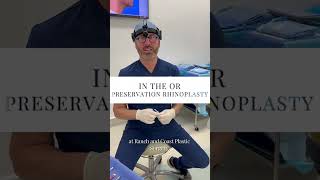Preservation Rhinoplasty Vs. Traditional Rhinoplasty
Preserving the Bridge
Preservation rhinoplasty focuses on preserving the natural shape and structure of the nose, particularly the bridge. This approach involves making small, precise incisions and carefully reshaping the nasal bones to maintain the natural contour of the nose. In contrast, traditional rhinoplasty often involves breaking and resetting the nasal bones, which can result in a more dramatic change to the shape of the nose.
Preserving Nasal Soft Tissue
Another critical difference between preservation and traditional rhinoplasty is the approach to preserving nasal soft tissue. Preservation rhinoplasty focuses on keeping as much of the natural soft tissue as possible, which can help maintain the natural shape and contour of the nose. Traditional rhinoplasty often involves removing and reshaping nasal soft tissue, which can dramatically change the nose's appearance.
Preserving the Alar Cartilage
Preservation rhinoplasty also strongly emphasizes preserving the alar cartilages, which are the cartilages that form the lower part of the nose. These cartilages play an essential role in maintaining the shape and support of the nose, and preserving them can help keep the natural appearance of the nose. In contrast, traditional rhinoplasty often involves removing or reshaping the alar cartilage, which can result in a more significant change to the shape of the nose.










